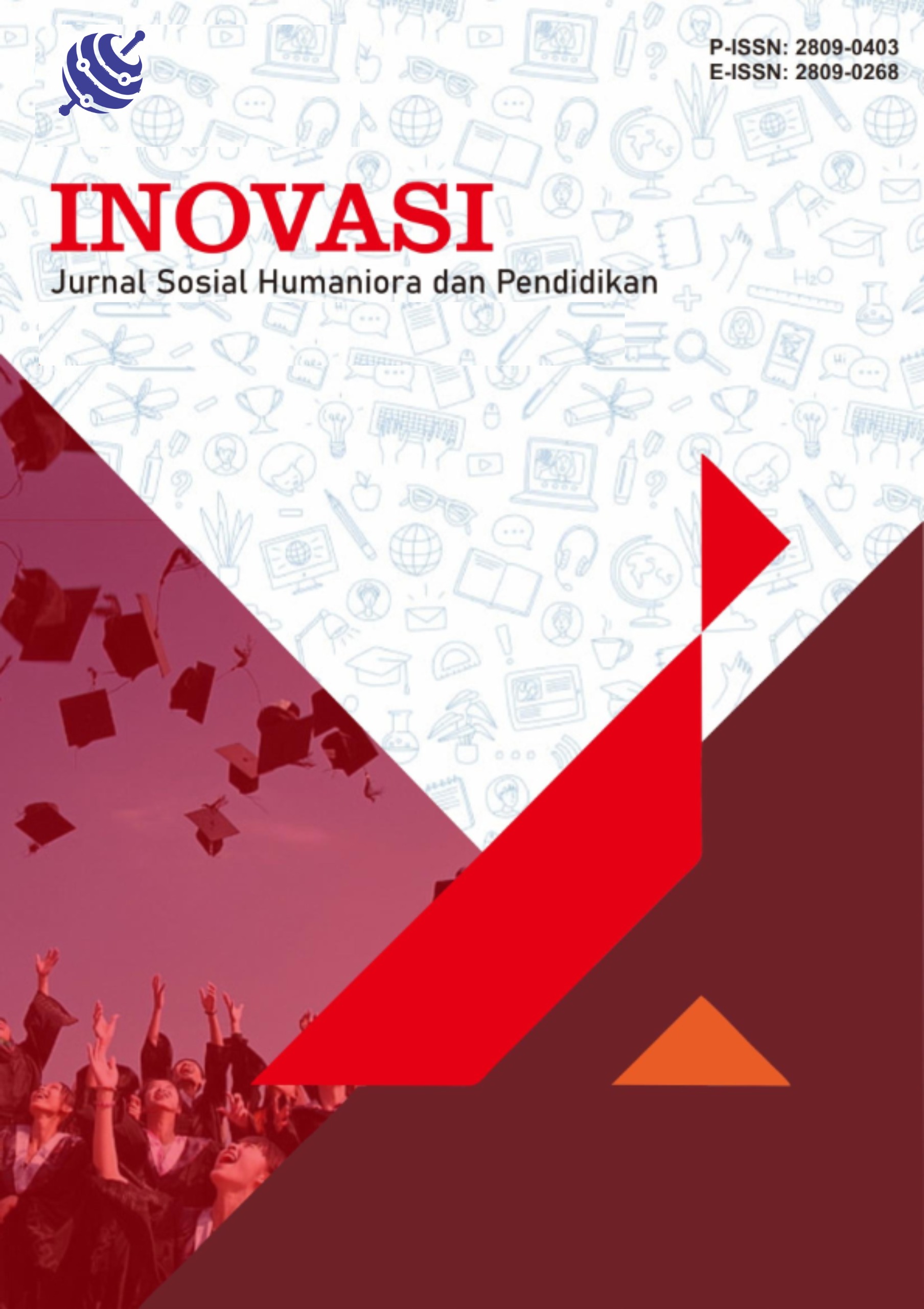Fostering EFL Learners' Speaking Fluency through Digital Storytelling: A Literature-Based Inquiry
DOI:
https://doi.org/10.55606/inovasi.v4i3.4585Keywords:
Digital storytelling, speaking fluency, EFL learners, language pedagogyAbstract
This research-based investigation delves into the pedagogical affordances of digital storytelling (DST) as a vehicle for advancing students' speaking fluency in English as a Foreign Language (EFL). Informed by Vygotsky's Sociocultural Theory, namely the Zone of Proximal Development (ZPD) theory, the study positions DST not merely as a multimedia activity but as a culturally mediated learning aid promoting oral proficiency through socially situated practice. A synthesis of empirical studies published between 2005 and 2024 identifies that DST fosters rehearsal-based fluency acquisition, mitigates speech anxiety, facilitates learner autonomy, and enhances reflective language awareness. Further, DST facilitates peer interaction and self-regulation and thus initiates the sociocognitive processes necessary for fluent language use. However, ongoing challenges like unequal technology access, inconsistent assessment practice, and varying degrees of digital literacy hinder its full implementation. The study suggests that DST, when appropriately scaffolded and presented in relation to communicative syllabus goals, is an operational model for the development of speaking fluency in EFL contexts.
References
Alamri, W., & Fawzi, H. (2021). The implementation challenges of digital storytelling in EFL classrooms: Teachers’ perspectives. International Journal of Emerging Technologies in Learning, 16(12), 89–102. https://doi.org/10.3991/ijet.v16i12.22045
Castañeda, M. E. (2013). I am proud that I did it and it’s a piece of me: Digital storytelling in the foreign language classroom. CALICO Journal, 30(1), 44–62. https://doi.org/10.11139/cj.30.1.44-62
Hafner, C. A. (2015). Remix culture and English language teaching: The expression of learner voice in digital multimodal compositions. TESOL Quarterly, 49(3), 486–509. https://doi.org/10.1002/tesq.238
Hafner, C. A., & Miller, L. (2019). Fostering digital literacies through digital storytelling in English for academic purposes. RELC Journal, 50(1), 61–75. https://doi.org/10.1177/0033688217738824
Hung, C. M. (2019). The impact of digital storytelling on EFL learners' speaking anxiety and speaking performance. Asian Journal of Education and e-Learning, 7(1), 1–10. https://doi.org/10.24203/ajeel.v7i1.5630
Kim, M. (2020). Digital storytelling and oral performance in English learning. Language Learning & Technology, 24(3), 103–120. http://llt.msu.edu/issues/october2020/kim.pdf
Krashen, S. (2009). Principles and practice in second language acquisition. Oxford: Pergamon Press.
Liu, T. Y., Tan, T. H., & Chu, Y. L. (2018). A collaborative storytelling system in virtual reality environments. Educational Technology & Society, 21(1), 121–132.
Park, S. (2020). Peer collaboration in digital storytelling and its effect on speaking fluency. Journal of Asia TEFL, 17(1), 102–117. https://doi.org/10.18823/asiatefl.2020.17.1.7.102
Pellerin, M., & Fracchia, M. (2021). Enhancing learner voice through mobile digital storytelling. International Journal of Mobile and Blended Learning, 13(4), 21–36. https://doi.org/10.4018/IJMBL.2021100102
Robin, B. R. (2016). The power of digital storytelling to support teaching and learning. Digital Education Review, 30, 17–29. https://doi.org/10.1344/der.2016.30.17-29
Shabani, K., Khatib, M., & Ebadi, S. (2010). Vygotsky's Zone of Proximal Development: Instructional implications and teachers' professional development. English Language Teaching, 3(4), 237–248. https://doi.org/10.5539/elt.v3n4p237
Smeda, N., Dakich, E., & Sharda, N. (2014). The effectiveness of digital storytelling in the classrooms: A comprehensive study. Smart Learning Environments, 1(6), 1–21. https://doi.org/10.1186/s40561-014-0006-3
Swain, M., Brooks, L., & Tocalli-Beller, A. (2002). Peer-peer dialogue as a means of second language learning. In P. Lightbown & C. Spada (Eds.), Rethinking the Second Language Classroom (pp. 123–145). Oxford University Press.
Teng, F. (2020). Exploring metacognition and self-regulation in digital storytelling for EFL speaking. Innovation in Language Learning and Teaching, 14(5), 425–438. https://doi.org/10.1080/17501229.2019.1572355
Teng, F. (2022). Rubric-based oral fluency assessment in digital storytelling contexts. Language Assessment Quarterly, 19(2), 131–150. https://doi.org/10.1080/15434303.2021.1948103
Teng, F., & Huang, J. (2023). Scaffolding EFL learners’ fluency through digital narrative stages. Computer Assisted Language Learning, 36(3), 253–271. https://doi.org/10.1080/09588221.2020.1799820
Wang, C., & Zhan, Z. (2022). Designing valid rubrics for DST: An assessment model for multimodal EFL speaking tasks. Assessment in Education, 29(1), 45–62. https://doi.org/10.1080/0969594X.2021.1988006
Warschauer, M., & Liaw, M. L. (2011). Emerging technologies for autonomous language learning. Studies in Self-Access Learning Journal, 2(4), 107–118.
Yang, Y. T. C., & Wu, W. C. I. (2021). Digital storytelling for enhancing student academic achievement, critical thinking, and learning motivation: A year-long experimental study. Computers & Education, 159, 104014. https://doi.org/10.1016/j.compedu.2020.104014
Downloads
Published
How to Cite
Issue
Section
License
Copyright (c) 2025 Jurnal Sosial Humaniora dan Pendidikan

This work is licensed under a Creative Commons Attribution-ShareAlike 4.0 International License.







